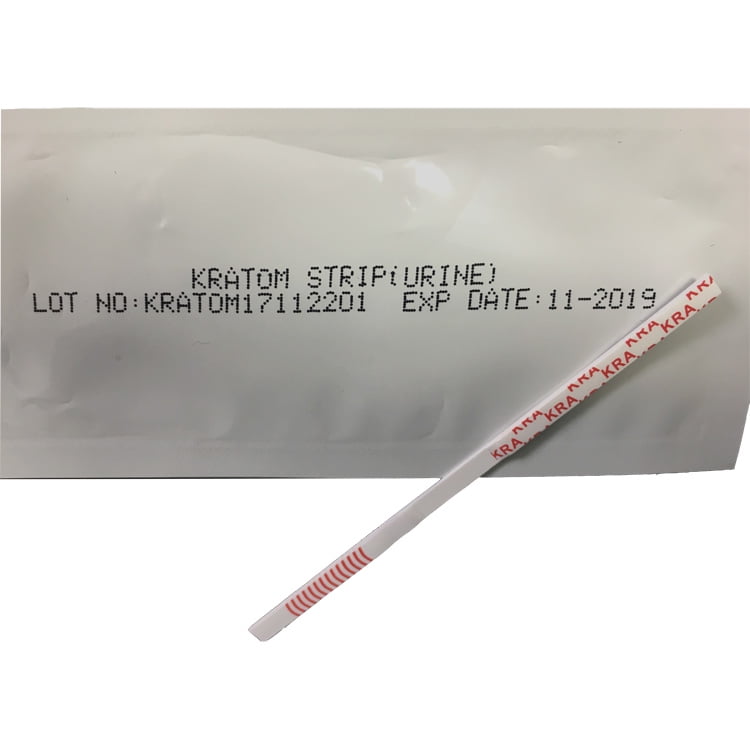
14 Mar Kratom Drug Test: Everything you Need to Know
What’s the Kratom Drug Test?
Kratom is an herbal supplement that is becoming increasingly well known in America. The material comes from the leaves of a rare plant that grows in the forest regions of South East Asia. It has a wide variety of advantages that many people value. They include improving focus, fostering energy, pain relief, and general mental stimulation, along with other perks.
But some people use the material as a substitute for hard opioid substances like heroin. Consequently, kratom use has brewed controversy. Some of the concerns associated with using kratom include: Can it trigger similar effects to heroin and other opioids? More to the point, is it detected in a drug test?

Given that the FDA is heightening its regulations on the importation and distribution of kratom products, the users can’t help but wonder if their careers will be in danger when they were subjected to an emergency medication evaluation. On the other hand, the DEA has recognized kratom as a substance of concern due to a few of the dangerous effects it may inflict on the human body.
The following is a comprehensive guide suggesting everything you want to learn regarding the kratom drug test.
How Long Does Kratom Stay in the Body?
If you ingest kratom, it requires approximately 10 to 15 minutes to begin feeling the consequences. The impacts of carrying kratom are believed to attain peak levels 1 1/2 to two 1/2 hours after ingestion.
If you take a dose, the effects may last for around 2 hours. However, larger doses may last for more than eight hours.
The half-life of kratom is a vital element when discussing how long it remains in the machine, especially if you’re concerned about that kratom medication evaluation.
The research on kratom usage is restricted and has only been studied in depth in animals. However, based on the existing research, the principal alkaloid (Mitragynine) is believed to have a half-life of around 23-24 hours. This implies that it might have a whole day to eliminate 50% of the atom from the body.
Available evidence suggests that temporary users of atom or people who use small doses would eliminate the substance faster than habitual and long-term users. What is more, the long term kratom consumer is said to take approximately 5 1/2 days to clean kratom off their own system.
What Determines How Long Kratom Stays In The Body?
As with any substance, several variables determine the length of time kratom takes to depart one’s system.
- Age— When it comes to stimulants and other substances, age is a primary factor of concern. Most orally ingested substances are likely to take longer to remove in older people than it does in younger people.
- Body Fat– The mitragynine in kratom is highly fat-soluble. This implies that if you’ve got a high proportion of body fat, you are more inclined to keep the kratom metabolites more than somebody with a decrease in body fat percentage.
- Genetics– Certain genetic markers and enzymes will probably impact the speed in which your system eliminates kratom.
- Food and Water Intake– Taking kratom with a high-fat diet may raise its bioavailability. Hydration level might also promote the period your body requires to excrete the material via urine.
Can Kratom Drug Test Exist?
At the moment, there’s no screening test for kratom. What’s more, due to the relative obscurity of this substance, there is not a drug test that is specially designed to detect the existence of kratom within an individual.
Kratom is categorized as a medicinal herb, rather than as a drug since it isn’t typically regarded to cause grave CNS effects. This usually means that most standard drug tests aren’t designed to check for kratom, meaning that the substance can be utilized in most parts of the planet with no risk of trouble related to using it.
Unfortunately, new tests are being developed to specifically search for kratom traces in the human body. However, the evaluations are still uncommon, and it’s highly unlikely they will be used in any employee’s routine drug screening anytime soon.

Such tests are accompanied by a host of legal issues because they exist purely due to ignorance regarding atoms and also the general hysteria about anything that could be vaguely considered as a drug.
Overall, kratom drug evaluations are uncommon, and there is a good probability they might never grace the workplace space in many states.
Does Kratom Register On a Drug Test?
You’ll be happy to know that the majority of normal drug evaluations are incapable of detecting kratom. What’s more, virtually all regular drug testing doesn’t contain any test especially meant for discovering kratom use. Mainly, the standards include worker and US government drug testing.
The majority of normal drug screening assessments are designed to detect illegal narcotics. Kratom’s consequences are caused by interaction with the exact same cell receptors with which opiates socialize. But, it is technically not an opiate. Unlike heroin, cocaine, marijuana, and methamphetamines, the active ingredient in kratom (alkaloid) features a unique chemical structure.
Don’t be misinformed. Kratom use may nevertheless be tested. On the other hand, the evaluation is intended to detect particles of mitragynine or its metabolites in urine, and these evaluations are infrequent. Given that kratom use is prohibited in many countries around the world, such tests are rarely applied and insignificant to the more significant bulk of kratom users.
Could the Kratom Drug Test Produce A False Positive?
Most drug tests you’ll encounter in the workplace or other related environments are based around the urine drug test (aka UDS), as it is a quick and generally exact form of testing. This evaluation can determine the existence of particular prescription medicine and a broad selection of prohibited substances, such as opioids, marijuana, benzodiazepines, and methamphetamines in the body. As such, it is a comparatively easy and comprehensive form of drug testing.
Some kinds of UDS doesn’t detect all medications, especially opioids, and may provide a false-positive outcome. A false positive occurs when you test positive for a drug you don’t use. When this occurs, you have to ask for a verification test called the Gas Chromatography/ Mass Spectrometry (GC/MS). UDS can also show a false negative effect (when the result is adverse despite using that particular drug.)
Traditional drug evaluations are unable to detect mitragynine or some of those other alkaloids found in kratom, implying that these chemicals can’t cause false-positive benefits at a UDS test.
In most cases, false-positive results are brought on by taking other drugs or supplements prior to the evaluation. Bearing that in mind, you must notify the attending physician about any supplements you’ve taken within the testing interval.
Assuming that kratom is the only substance you’ve taken before the medication test, a false positive is highly unlikely to occur. The false positives are more likely caused by other medication or nutritional supplements, and if they occur, another drug test can easily authenticate you haven’t taken any illegal drugs.
Kratom Drug Test
As you might have noted so far, an individual may opt to use kratom based on the belief that it will not be flagged in standard drug tests like SAMHSA-5. But some kratom alkaloids are detectable through specific drug evaluations, e.g. urine or blood tests.
Check out a few of the subsequent kratom drug evaluations.
Kratom Urine Exam
Some alkaloids located in kratom could possibly be detected in specific urine evaluations. The study indicating the duration it requires kratom to be undetectable in an individual’s urine is limited. However, trace amounts could be detected in a urine test over a week.
If an atom were to become illegal in the United States, the government would likely focus more on urine testing as the preferred testing method.
Kratom Blood Test
A blood test could be done in order to establish if a person took kratom and just how much of it was taken (hypothetically). Given that kratom is a chemical that is readily detectable in blood, blood tests can show the concentration levels of kratom.
If someone is a long-term kratom user, it is possible for metabolites to appear in the blood for several days following consumption. However, blood tests are more invasive and supply a shorter window for detection.
Kratom Hair Test
Testing hair follicles are perceived as a reliable method of testing for substance use with many drugs. The tests may also be done during a long period. However, there isn’t any evidence of hair tests being used to discover kratom usage.
It would not be unlikely to have kratom metabolites appearing in hair follicles. But as more research on the material is ran, more work may be performed on testing that is accurate, which could incorporate baldness testing.
Kratom Saliva Test
A saliva test may be utilized to discover kratom traces. Oral fluid testing is a popular method used to test for various kinds of drugs. However, this is mostly employed for lawful drug evaluations. Kratom is not currently prohibited in the USA. As a result, saliva testing isn’t commonly preferred with this herb.
Conclusion
So, are you entirely safe from a kratom drug test? Yes, mostly, but not completely. The vast majority of the drug evaluations utilized today are easy urine drug tests that are incapable of identifying the active alkaloids from kratom products.
The primary risk from kratom during a drug test is the false-positive results brought on by mixing kratom with medication or other supplements.




No Comments